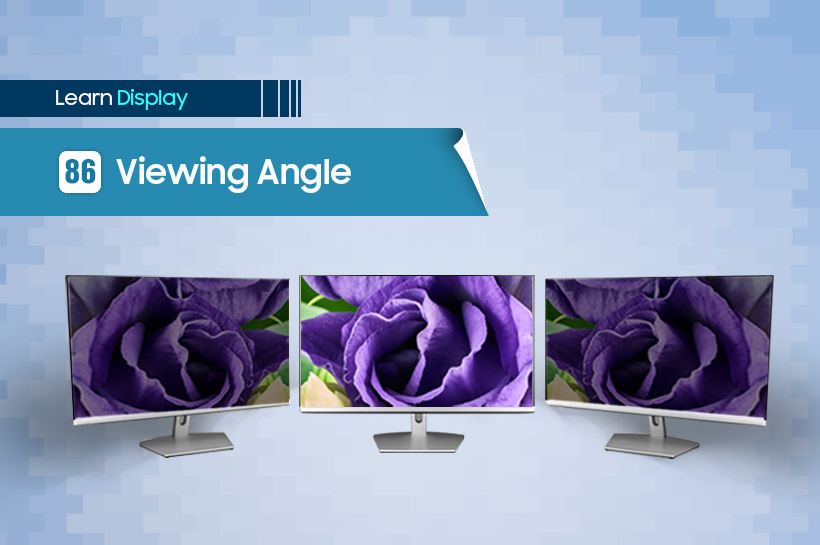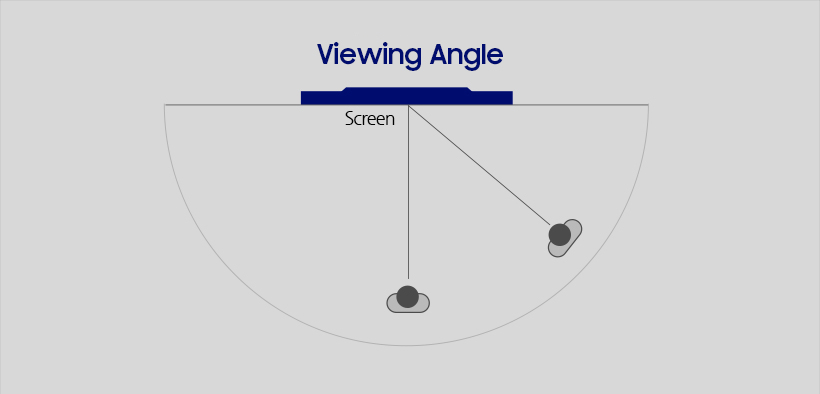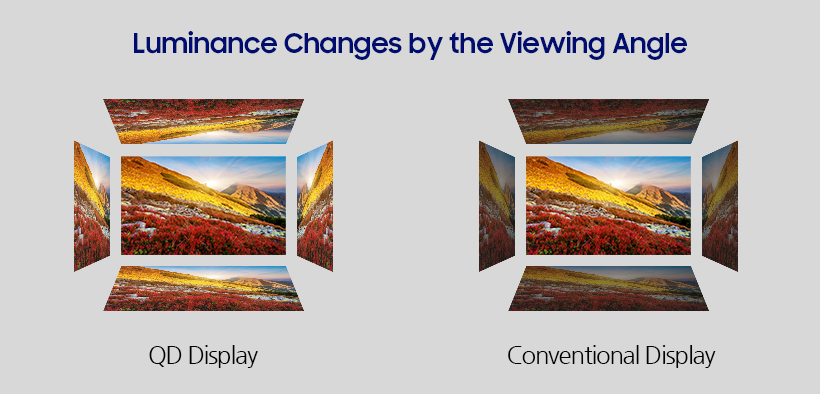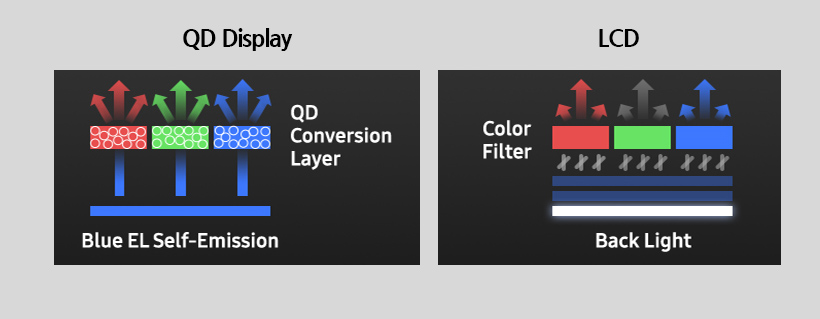
‘Field of view’ refers to the range of what a human eye or a lens can see. The ‘viewing angle’, often used when evaluating the specs of a display panel, is a concept closely connected to this field of view. The image quality on a display screen often looks different depending on which angle you look at it from, although this varies from product to product.
You’ll get a clear picture when viewed from the front, but viewing from the side or above might give you pictures that look darker or dull. When viewing the display screen, the angle at which the picture quality can be viewed without any distortion is called the 'viewing angle'.

The viewing angle is a numerical measure of the difference in image quality when the display screen is viewed from the right, left, above, and bottom, as compared to the front. A display with a good viewing angle allows you to enjoy the screen, with the same picture quality, regardless of the viewing position. A poor viewing angle will give you sub-optimal image quality when viewed from the side, with color distortion and reduced luminance.

Light generally travels straight. So a display panel that creates images using light, is affected in terms of its brightness and color depending on the viewing angle. The light emitted by an LCD backlight passes through liquid crystals and a color filter, resulting in a limited viewing angle as compared to a self-emissive display. The QD display panel, which is attracting attention as the next-generation large-scale display, is a self-emissive display. QD has the ability to emit light consistently in all directions, thereby minimizing the changes in image quality affected by the viewing angle. This delivers consistent luminance and colors.




